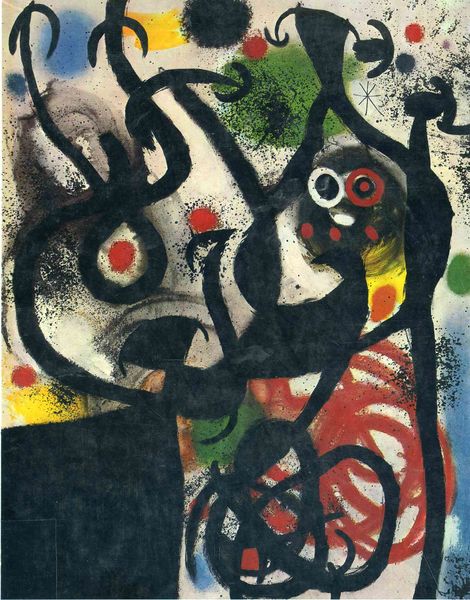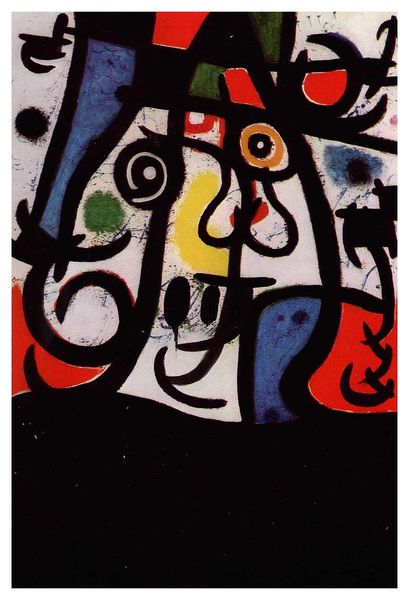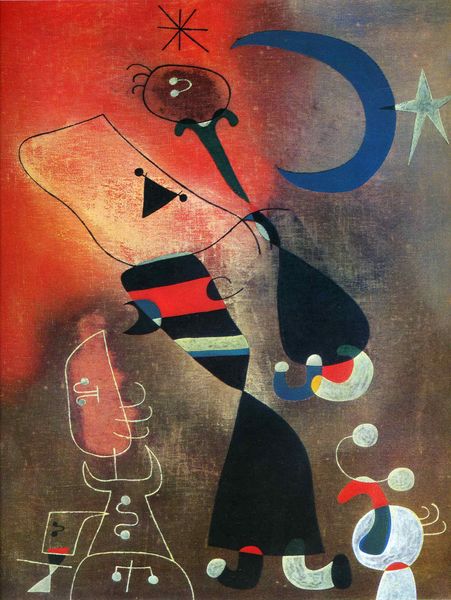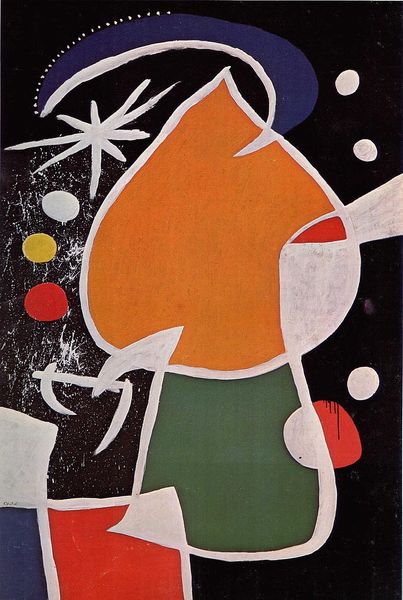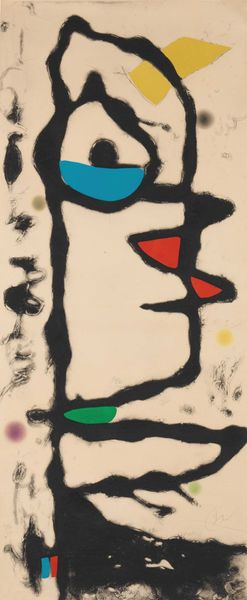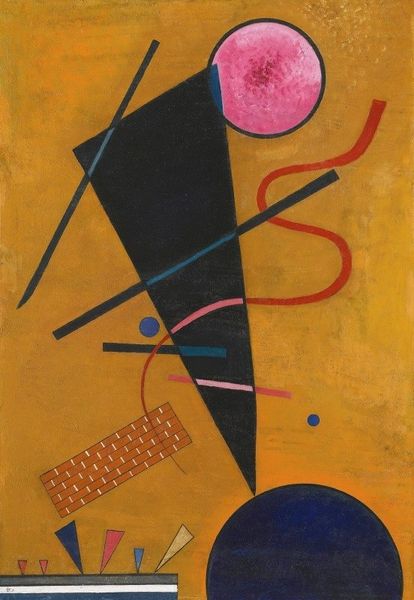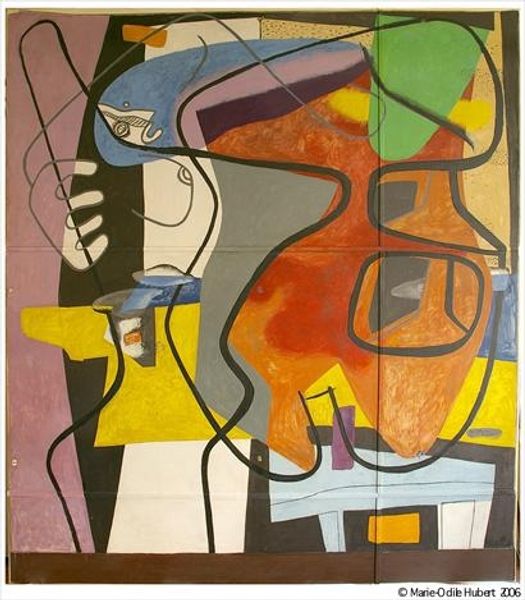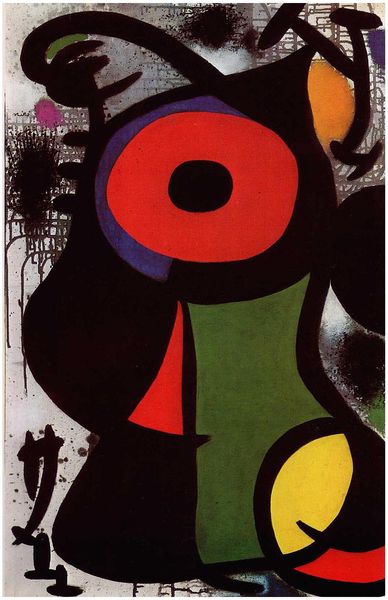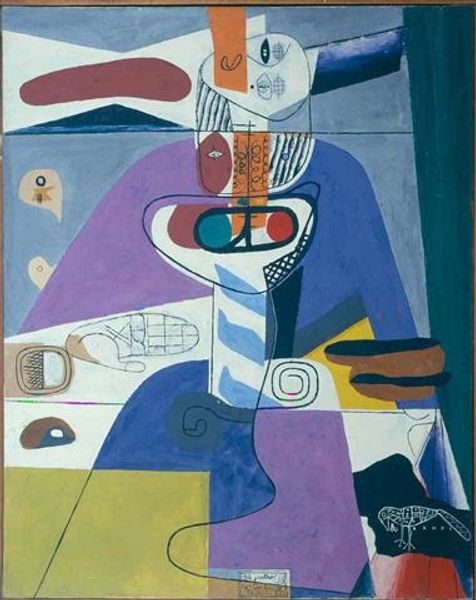
painting, oil-paint
#
organic
#
painting
#
oil-paint
#
figuration
#
naive art
#
biomorphic
#
abstraction
#
painting art
#
surrealism
#
modernism
Copyright: Joan Miro,Fair Use
Curator: What a curious and evocative piece. Joan Miró's "The Red Sun," painted in 1948, strikes me with its vibrant yet unsettling character. Editor: Unsettling is right. There's a primordial feel, almost like looking at a diagram of some strange cellular world—an organic system about to burst or decay. Curator: The painting does pulse with biomorphic forms, doesn't it? Note the oil paint applied in such a way as to allow a sense of movement between the color fields—the interplay between the azure and the encompassing darkness, and then punctuated by that titular sun. Editor: Yes, the "Red Sun" dominates, yet feels somewhat separate. And is that figure on the right… Is that supposed to be a human-like figure? With those pointed, almost sharp shapes? It’s as if it’s judging the whole scene. This was painted just after the Second World War, and I can’t help but think about its looming presence and the shadow it casts over even something as elemental as the sun. Curator: I find your interpretation fascinating, given the abstract qualities! However, considering Miró’s surrealist leanings, it might be safer to explore that contrast, rather than presume a literal socio-political depiction. Perhaps the geometric figure emphasizes the tension between order and the chaos we see elsewhere? Editor: But wasn’t Surrealism always engaged with politics, often pushing boundaries of conventional morals and tastes? Maybe Miró used this language of abstraction to discuss anxieties which words simply couldn't? Curator: A fair point. And regardless of Miró's intention, it’s true, works always come to have an ongoing relationship to societal dialogues. Editor: I keep getting drawn back to the figure's rigidity contrasting with the sun’s flowing energy… Maybe Miró asks: In what way do people try to put forms and strictures around forces larger than themselves? Curator: Perhaps. The artwork becomes then a field to question the dynamics that organize reality, a space between symbols, form, and socio-cultural narratives. A painting to get lost within and reflect on what comes out. Editor: Absolutely. A testament to the ways artistic works hold history, but in the context of the shapes, color and form, not of specific moments necessarily.
Comments
No comments
Be the first to comment and join the conversation on the ultimate creative platform.
